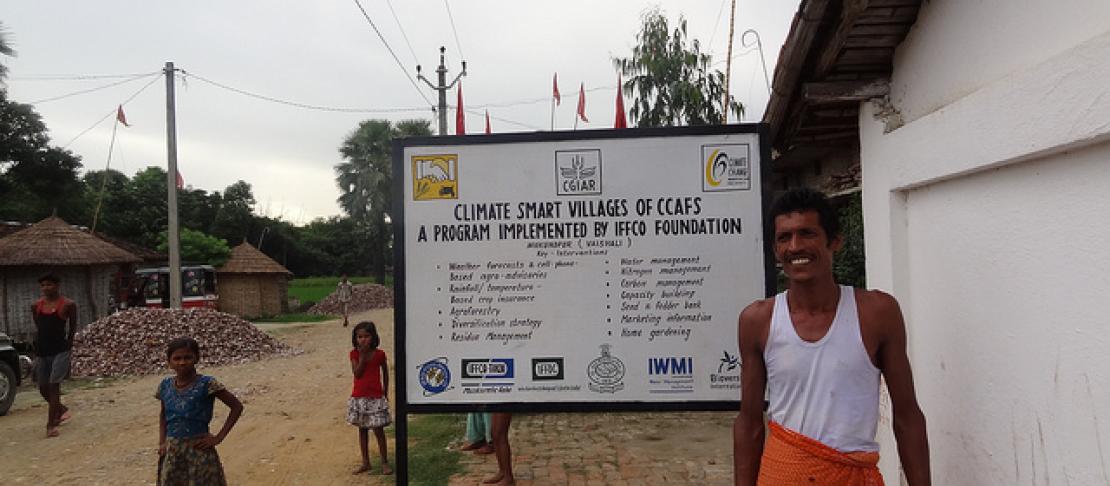What are Climate-Smart Villages?

This story highlights our Climate-Smart Village activities in South Asia.
by Cecilia Schubert and Dharini Parthasarathy
It is not unusual for farmers to give up on agriculture when repeatedly having to deal with erratic and extreme weather events. For Horil Singh, a farmer from Rajapakar in India, changes in the summer temperatures and delayed rainfall severely affected his crop planning.
“We have seen the weather change to a great extent,” he said in a sit-down interview, "Now low or delayed rainfall has become the norm.”
The question is, how can a farmer plan for the unexpected? And where does he turn when the weather has failed him yet again?
At the moment, our South Asia Regional Program is working hard to implement and scale-out the ‘Climate-Smart Village’ model project. The project is active in the states of Bihar and Haryana in India, where a number of videos on the ongoing activities have been filmed.
“These villages will serve as benchmark villages," said Devender Singh from Rajapakar in the making of the videos. ”In the changing climate, farmers will be shown how to continue farming with new technologies.”
The CGIAR Research Program on Climate Change, Agriculture and Food Security (CCAFS) envisions the Climate-Smart Village project to not only be long-term, but also participatory and relevant to the local context. Women farmers are encouraged to weigh in on all the discussions and take the lead in prioritizing what activities should be implemented in their villages. This is to make sure the climate-smart farming practices stick on long after the project has been phased out.
Learn more: Climate-Smart Villages
The location of a Climate-Smart Village is selected based on its climate risk profile and the willingness of farmers and local governments to participate in the project.
Researchers conduct a baseline survey to capture the current socio-economic conditions and analyse resource availability and average production and income among other indicators. This enables an impact assessment after a period of time to gauge the benefits of the interventions.
Stakeholders convene to prioritize which interventions they will take up that are best suited to their local conditions. This is done through a choice experiment that analyses their preference and willingness to pay for technologies. Disseminating information on climate-smart agriculture practices and outcomes is an important part of the capacity building process. Farmers are encouraged to record their testimonials and feedback at regular intervals and share it with researchers and the community.
One successful activity that has been rolled out is the index-based insurance scheme. Several farmers have already received payments for failed crops that they have been able to invest in new seeds and tools.
Read their story: Farmers reap the benefits from climate insurance scheme
The scheme relies on little financial investment but is a good example of collaboration, linking research with practice.
Working with partners: Climate smart villages in India show early signs of great reform achievements
On 15 July, we will be convening a side event at the Africa Agriculture Science Week, in Ghana, on the Climate-Smart Village model: Climate-Smart Villages in Africa - Opportunities for farmers and communities. If you are at AASW join us!
Learn more about Climate-Smart Village activities in our other regions:
In Senegal, farmers use forecasts to combat climate risks
Kenyan farmers battle hunger with chicken, goats and bees
Watch more videos on the Climate-Smart Village model in Bihar.
Cecilia Schubert is a Communications Assistant at CCAFS Coordinating Unit. Dharini Parthasarathy is a Communications Specialist for CCAFS South Asia. Follow us on Twitter for the latest climate change and agriculture stories: @Cgiarclimate


